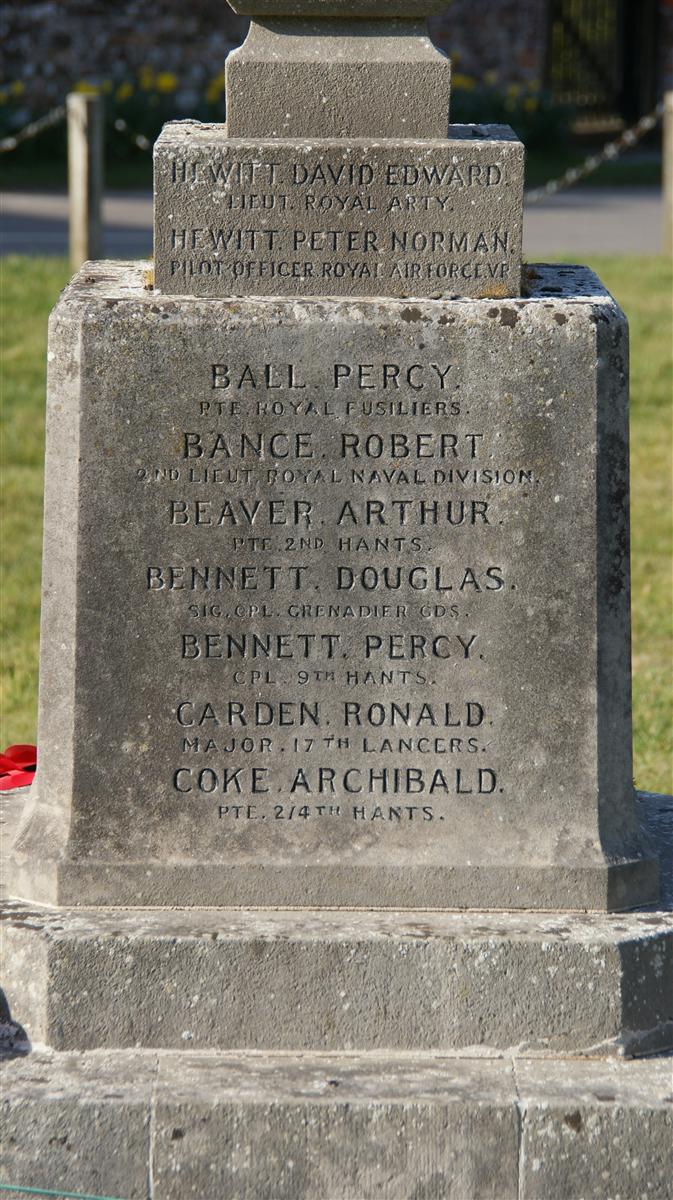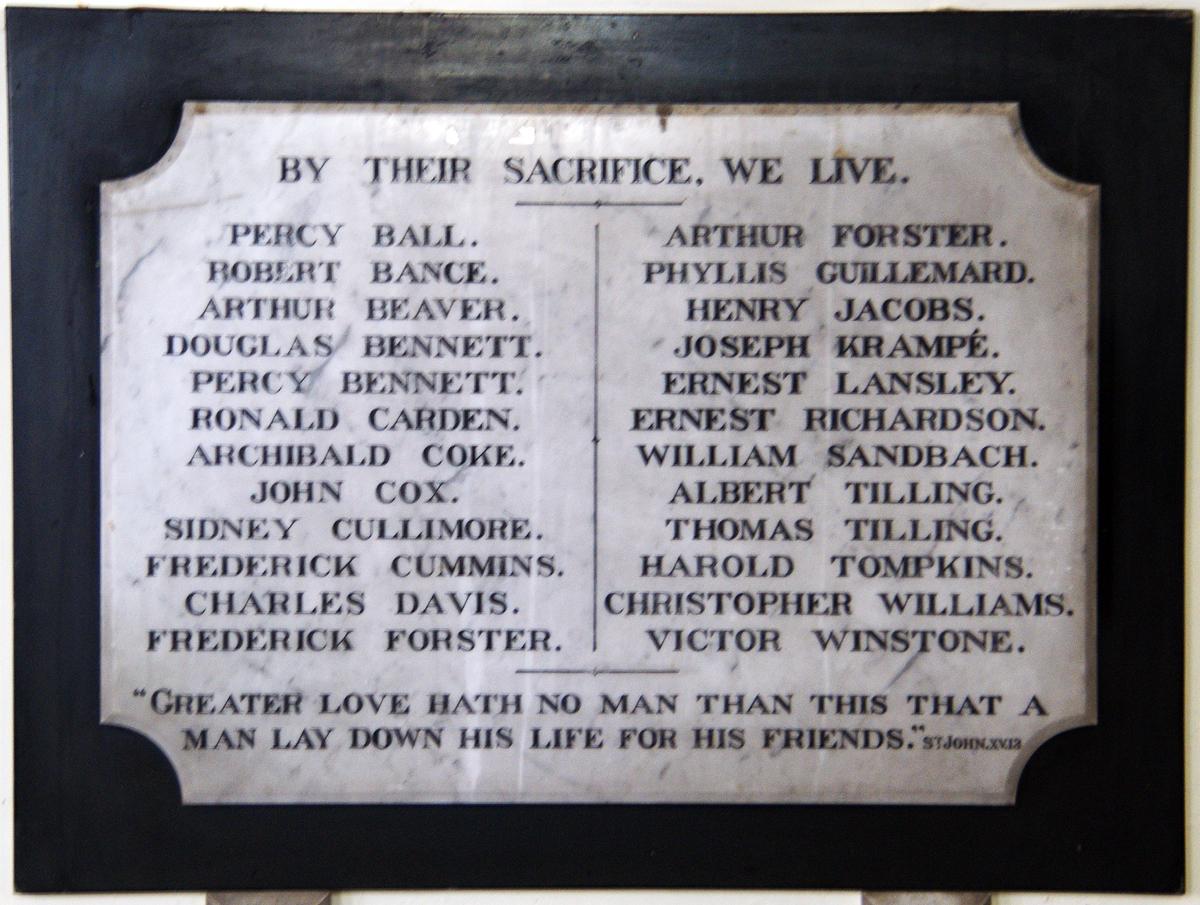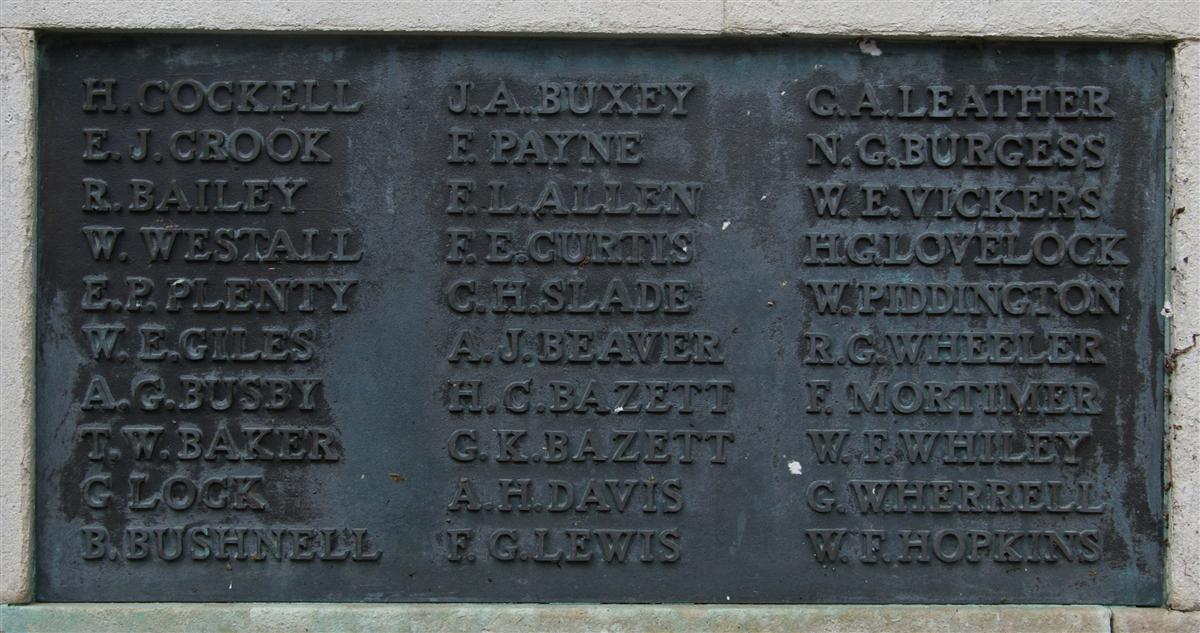Arthur John Beaver
Private 242592 Arthur John Beaver 2nd Battalion, Hampshire Regiment
Arthur was born in Thatcham in early 1897, the eldest child of Arthur Adam Beaver and his wife Frances Emma (née Green). Arthur senior described his occupation as ‘blacksmith’ in 1901 but had changed to become a ‘hot and cold water engineer’ by 1911. A cold water supply was commonplace in towns by this time, but hot water from a tap was still a novelty reserved for the wealthier end of society. Young Arthur had left school by this time and was working with his father as a hot and cold water fitting worker.
The family moved around, Arthur’s younger siblings were born in Yattendon (Muriel Frances, 1899), and Newbury (Cecil, 1903) before the family moved again to East Woodhay (1911) – where Arthur senior was remembered as a builder. When young Arthur signed up with the Army he gave his residence as Newbury.
He doesn’t appear on local lists of volunteers printed in the Newbury Weekly News throughout 1915 and into early 1916. This suggests that he was probably conscripted, which would involve a period of with the Training Reserve, seemingly in the 5th Reserve Battalion - originally the 3rd/5th (Territorial) Battalion, Hampshire Regiment. This explains the two service numbers on his record: on enlistment he was given the number 30756 (allocated to the 5th Reserves), which was changed to 242592 when the Territorials were renumbered in 1917 (on or after 1 March).

Arthur's name on the war memorial in East End, East Woodhay. |
The next British offensive was an attempt to capture the town of Cambrai in France. The Battle of Cambrai (20 November – 7 December 1917) was the first time the British used massed tanks, over 450 of them. The opening days were extremely successful, the tanks broke through the German defences (the Hindenburg Line) and into open country beyond. However, the Germans had developed effective anti-tank tactics, using field guns firing directly at the tanks from close range. Combined with the difficulty of supplying their advance troops this resulted in the attack petering out short of its objective. On 30 November the Germans then counter-attacked in force and pushed the British back, in most places right back to their starting position on 20 November, in some cases even further.
The 29th Division was near Marcoing holding the line at the southern flank of the salient created by the successful advance in November; at the point where it joined the long established line. The German aim was to break both flanks (north and south) and cut off the more advanced troops to the east, the 29th Division was standing in their way. On 2 December the German assault smashed into the part of the line held by the 88th Brigade; the 1st Battalion, Essex Regiment were reported to have lost their section of line and the 2nd Battalion, Hampshire Regiment, which was in reserve at this point, were ordered forward to counter-attack and retake the line. On sending men forward to reconnoitre the Hampshire’s CO discovered that the 1st Essex were still holding the line together with the Newfoundlanders. So the counter-attack was cancelled and the rest of the day was spent consolidating reserve lines, in case the Germans broke through. Overnight the entire 88th Brigade withdrew to new positions in the old Hindenberg Line, the following day the Germans hit hard:
War Diary, 2nd Battalion, Hampshire Regiment

Arthur's name on the war memorial in St Martin's Church, East Woodhay. |
Casualties: Other Ranks – 5 killed, 36 wounded, 43 missing. 2/Lieut A H Alexander, Killed
Considering the report that W Coy was reduced to 20 men the casualty list was surprisingly light. The Battalion had 34 offices and 873 men at the end of November so its companies should have been at a strength of 150 or more. Presumably many of the men were simply lost and straggled in over time.
Nevertheless, Arthur was among those lost, missing in action. His body was never identified so he is remembered on the Cambrai Memorial to the missing of this battle.
After six months anxiously waiting for news his parents were notified by the War Office that Arthur was presumed to have died that day, or soon thereafter:
Newbury Weekly News, 13 June 1918 – Died on Active Service
BEAVER – Reported missing December 3rd, 1917, now officially reported killed on that date, or since at the Battle of Cambrai, Arthur J, the eldest son of Mr and Mrs Beaver, of Heath End, Woodhay, aged 20 years.

Arthur's name on Newbury War Memorial (middle right) |
He was also remembered on the memorial window in the Primitive Methodist Chapel in Bartholomew Street, Newbury. Sadly this memorial was lost when the chapel was demolished in 1962.
For more on East Woodhay and WW1 download The Great War in East Woodhay by Graham Heald of East Woodhay Local History Group.
Thanks to Karen Newbery for her help researching this soldier.

